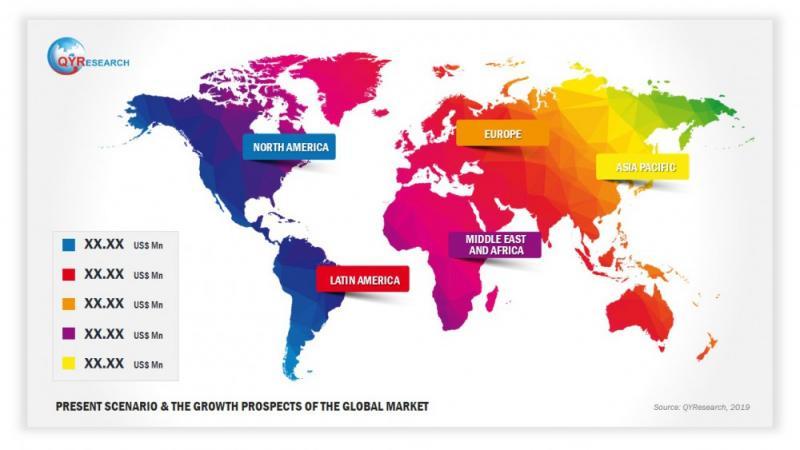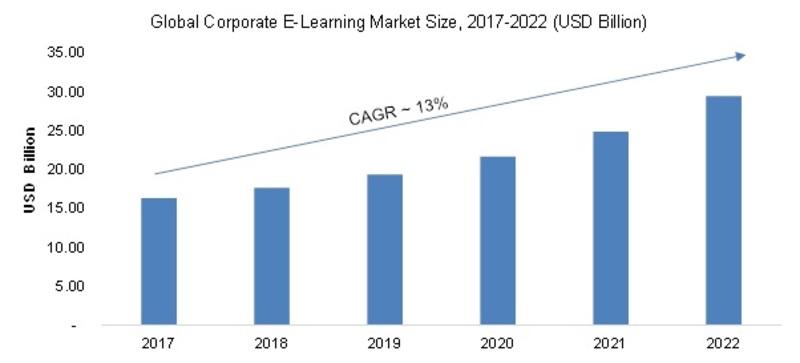Press release
Paperboard Tray Market Set to Reach $7.2 Bn by 2033, Growing at 4.6% CAGR
The global paperboard tray market is projected to reach US$7.2 billion by 2033, growing at a CAGR of 4.6% from 2024 to 2033. Increasing demand for eco-friendly packaging and the growth of the food and beverage sector are key drivers. With a market size of US$6.7 billion in 2024, Asia Pacific leads the market with a 35% share, driven by high demand for sustainable packaging in emerging economies like India and China. Key end-users include the food industry, which accounts for 55% of the market share, with microwave trays dominating at 65%. As sustainability initiatives expand globally, paperboard trays are poised for steady growth.
𝐑𝐞𝐪𝐮𝐞𝐬𝐭 𝐟𝐨𝐫 𝐒𝐚𝐦𝐩𝐥𝐞: https://www.persistencemarketresearch.com/samples/34019
𝐔𝐧𝐝𝐞𝐫𝐬𝐭𝐚𝐧𝐝𝐢𝐧𝐠 𝐭𝐡𝐞 𝐆𝐫𝐨𝐰𝐭𝐡 𝐃𝐫𝐢𝐯𝐞𝐫𝐬 𝐨𝐟 𝐭𝐡𝐞 𝐏𝐚𝐩𝐞𝐫𝐛𝐨𝐚𝐫𝐝 𝐓𝐫𝐚𝐲 𝐌𝐚𝐫𝐤𝐞𝐭
The paperboard tray market's growth is primarily fueled by the rising consumer preference for sustainable and eco-friendly packaging options. Paperboard, being recyclable, biodegradable, and made from renewable resources, has become a preferred material in packaging. This shift toward sustainability is especially prominent in the food and beverage industry, where consumers are increasingly looking for brands that align with environmentally friendly practices.
In addition, the global trend toward reducing plastic waste and minimizing environmental impact has prompted governments worldwide to impose stringent regulations on plastic packaging. Many countries are encouraging or mandating the use of paper-based alternatives, which has further accelerated the adoption of paperboard trays.
The foodservice sector, in particular, has seen a significant increase in demand for paperboard trays due to their suitability for packaging ready-to-eat meals, snacks, and beverages. Fast food chains, quick-service restaurants, and other food retailers are increasingly opting for paperboard trays as a more sustainable and cost-effective alternative to plastic trays.
𝐊𝐞𝐲 𝐓𝐫𝐞𝐧𝐝𝐬 𝐢𝐧 𝐭𝐡𝐞 𝐏𝐚𝐩𝐞𝐫𝐛𝐨𝐚𝐫𝐝 𝐓𝐫𝐚𝐲 𝐌𝐚𝐫𝐤𝐞𝐭
Several key trends are shaping the paperboard tray market. One of the most notable trends is the increasing demand for custom-designed paperboard trays. Brands are seeking unique packaging solutions that align with their brand image and enhance customer experience. Customization allows brands to differentiate their products on the shelf and engage with consumers through appealing packaging.
Another trend is the integration of advanced printing and coating technologies in the production of paperboard trays. These technologies not only enhance the visual appeal of the trays but also provide additional functional benefits such as improved moisture resistance and durability. This development makes paperboard trays a viable option for packaging a wider variety of products, including fresh produce and frozen foods.
Additionally, the shift toward online food delivery and e-commerce has also positively impacted the demand for paperboard trays. As more people order food online, the need for safe, secure, and eco-friendly packaging solutions has grown, contributing to the overall market expansion.
𝐑𝐞𝐠𝐢𝐨𝐧𝐚𝐥 𝐈𝐧𝐬𝐢𝐠𝐡𝐭𝐬: 𝐖𝐡𝐞𝐫𝐞 𝐢𝐬 𝐭𝐡𝐞 𝐏𝐚𝐩𝐞𝐫𝐛𝐨𝐚𝐫𝐝 𝐓𝐫𝐚𝐲 𝐌𝐚𝐫𝐤𝐞𝐭 𝐆𝐫𝐨𝐰𝐢𝐧𝐠 𝐭𝐡𝐞 𝐌𝐨𝐬𝐭?
The paperboard tray market is witnessing growth across various regions, but certain regions are leading the way in terms of market size and growth potential.
1. North America: North America holds a significant share of the paperboard tray market, driven by the growing trend of sustainable packaging solutions in the U.S. and Canada. The region has witnessed widespread adoption of paperboard trays in the foodservice industry, including for fast food, takeout, and delivery services. Additionally, the increasing regulatory pressure on plastic usage is further boosting the demand for paperboard alternatives.
2. Europe: Europe is another key market for paperboard trays, particularly in countries like Germany, the U.K., and France, where environmental sustainability is a major concern. European consumers are increasingly prioritizing eco-friendly products, and government policies aimed at reducing plastic waste are encouraging the shift to paperboard trays. The region's food and beverage industry is also a major consumer of paperboard trays, especially in the packaged food segment.
3. Asia Pacific: The Asia Pacific region is expected to witness the highest growth rate during the forecast period. Countries such as China, India, and Japan are seeing rapid urbanization, a growing middle class, and increasing demand for packaged food products. With a rising focus on sustainability and the growing food delivery market, the paperboard tray market in Asia Pacific is poised for significant expansion.
4. Latin America and the Middle East & Africa (MEA): While these regions are smaller markets compared to North America and Europe, they are gradually adopting paperboard trays as a more sustainable packaging alternative. In Latin America, Brazil is leading the charge, while the MEA region is seeing a gradual shift towards eco-friendly packaging, especially in countries like the UAE and Saudi Arabia.
𝐂𝐡𝐚𝐥𝐥𝐞𝐧𝐠𝐞𝐬 𝐅𝐚𝐜𝐢𝐧𝐠 𝐭𝐡𝐞 𝐏𝐚𝐩𝐞𝐫𝐛𝐨𝐚𝐫𝐝 𝐓𝐫𝐚𝐲 𝐌𝐚𝐫𝐤𝐞𝐭
While the paperboard tray market is growing steadily, it faces several challenges that could hinder its full potential.
1. High Cost of Raw Materials: The cost of raw materials required to produce paperboard trays, such as recycled paper and virgin pulp, can be high, which affects the overall production cost. This could result in paperboard trays being more expensive than plastic or other conventional packaging alternatives. To mitigate this challenge, manufacturers are constantly looking for ways to optimize production processes and use more sustainable raw materials.
2. Competition from Other Packaging Materials: While paperboard trays are gaining popularity, they still face stiff competition from other packaging materials such as plastic, aluminum, and biodegradable plastics. These materials often offer superior moisture resistance, strength, and lower production costs, making them more attractive options for certain applications.
3. Limitations in Performance for Certain Products: Paperboard trays may not offer the same level of protection and durability as plastic or metal packaging for some types of products. For instance, paperboard trays may struggle with holding highly perishable products, liquids, or products that require long shelf lives. Manufacturers are continuously working to improve the performance characteristics of paperboard trays through coatings, lamination, and improved design.
𝐓𝐡𝐞 𝐅𝐮𝐭𝐮𝐫𝐞 𝐎𝐮𝐭𝐥𝐨𝐨𝐤 𝐟𝐨𝐫 𝐭𝐡𝐞 𝐏𝐚𝐩𝐞𝐫𝐛𝐨𝐚𝐫𝐝 𝐓𝐫𝐚𝐲 𝐌𝐚𝐫𝐤𝐞𝐭
The future of the paperboard tray market looks bright, with increasing demand from industries such as food and beverage, retail, and healthcare. As more businesses embrace sustainability and move away from plastic, paperboard trays are expected to gain further traction.
Technological advancements in manufacturing processes, such as the use of digital printing, automated production lines, and advanced coating technologies, will continue to improve the quality and efficiency of paperboard tray production. These innovations will likely reduce production costs and enhance the performance of paperboard trays, making them more attractive to a wider range of industries.
Furthermore, the increasing push for circular economy models, where materials are reused, recycled, or repurposed, will further contribute to the growth of the paperboard tray market. As consumers become more environmentally conscious, the demand for sustainable packaging solutions is expected to rise, driving the market toward new opportunities.
𝐂𝐨𝐧𝐜𝐥𝐮𝐬𝐢𝐨𝐧
The paperboard tray market is set to experience robust growth, with an expected market value of $7.2 billion by 2033, growing at a CAGR of 4.6%. The driving factors include the growing demand for sustainable packaging, the rise in food delivery services, and the regulatory shift away from plastic packaging. Despite challenges such as high material costs and competition from other packaging solutions, the market is well-positioned for long-term growth, with significant opportunities emerging across various regions. As sustainability becomes increasingly important, the paperboard tray market is likely to continue its upward trajectory, providing businesses with an eco-friendly and cost-effective packaging solution.
𝐂𝐨𝐧𝐭𝐚𝐜𝐭 𝐔𝐬:
Persistence Market Research
G04 Golden Mile House, Clayponds Lane
Brentford, London, TW8 0GU UK
USA Phone: +1 646-878-6329
UK Phone: +44 203-837-5656
Email: sales@persistencemarketresearch.com
Web: https://www.persistencemarketresearch.com
𝐀𝐛𝐨𝐮𝐭 𝐏𝐞𝐫𝐬𝐢𝐬𝐭𝐞𝐧𝐜𝐞 𝐌𝐚𝐫𝐤𝐞𝐭 𝐑𝐞𝐬𝐞𝐚𝐫𝐜𝐡:
At Persistence Market Research, we specialize in creating research studies that serve as strategic tools for driving business growth. Established as a proprietary firm in 2012, we have evolved into a registered company in England and Wales in 2023 under the name Persistence Research & Consultancy Services Ltd. With a solid foundation, we have completed over 3600 custom and syndicate market research projects, and delivered more than 2700 projects for other leading market research companies' clients.
Our approach combines traditional market research methods with modern tools to offer comprehensive research solutions. With a decade of experience, we pride ourselves on deriving actionable insights from data to help businesses stay ahead of the competition. Our client base spans multinational corporations, leading consulting firms, investment funds, and government departments. A significant portion of our sales comes from repeat clients, a testament to the value and trust we've built over the years.
𝐑𝐞𝐪𝐮𝐞𝐬𝐭 𝐟𝐨𝐫 𝐒𝐚𝐦𝐩𝐥𝐞: https://www.persistencemarketresearch.com/samples/34019
𝐔𝐧𝐝𝐞𝐫𝐬𝐭𝐚𝐧𝐝𝐢𝐧𝐠 𝐭𝐡𝐞 𝐆𝐫𝐨𝐰𝐭𝐡 𝐃𝐫𝐢𝐯𝐞𝐫𝐬 𝐨𝐟 𝐭𝐡𝐞 𝐏𝐚𝐩𝐞𝐫𝐛𝐨𝐚𝐫𝐝 𝐓𝐫𝐚𝐲 𝐌𝐚𝐫𝐤𝐞𝐭
The paperboard tray market's growth is primarily fueled by the rising consumer preference for sustainable and eco-friendly packaging options. Paperboard, being recyclable, biodegradable, and made from renewable resources, has become a preferred material in packaging. This shift toward sustainability is especially prominent in the food and beverage industry, where consumers are increasingly looking for brands that align with environmentally friendly practices.
In addition, the global trend toward reducing plastic waste and minimizing environmental impact has prompted governments worldwide to impose stringent regulations on plastic packaging. Many countries are encouraging or mandating the use of paper-based alternatives, which has further accelerated the adoption of paperboard trays.
The foodservice sector, in particular, has seen a significant increase in demand for paperboard trays due to their suitability for packaging ready-to-eat meals, snacks, and beverages. Fast food chains, quick-service restaurants, and other food retailers are increasingly opting for paperboard trays as a more sustainable and cost-effective alternative to plastic trays.
𝐊𝐞𝐲 𝐓𝐫𝐞𝐧𝐝𝐬 𝐢𝐧 𝐭𝐡𝐞 𝐏𝐚𝐩𝐞𝐫𝐛𝐨𝐚𝐫𝐝 𝐓𝐫𝐚𝐲 𝐌𝐚𝐫𝐤𝐞𝐭
Several key trends are shaping the paperboard tray market. One of the most notable trends is the increasing demand for custom-designed paperboard trays. Brands are seeking unique packaging solutions that align with their brand image and enhance customer experience. Customization allows brands to differentiate their products on the shelf and engage with consumers through appealing packaging.
Another trend is the integration of advanced printing and coating technologies in the production of paperboard trays. These technologies not only enhance the visual appeal of the trays but also provide additional functional benefits such as improved moisture resistance and durability. This development makes paperboard trays a viable option for packaging a wider variety of products, including fresh produce and frozen foods.
Additionally, the shift toward online food delivery and e-commerce has also positively impacted the demand for paperboard trays. As more people order food online, the need for safe, secure, and eco-friendly packaging solutions has grown, contributing to the overall market expansion.
𝐑𝐞𝐠𝐢𝐨𝐧𝐚𝐥 𝐈𝐧𝐬𝐢𝐠𝐡𝐭𝐬: 𝐖𝐡𝐞𝐫𝐞 𝐢𝐬 𝐭𝐡𝐞 𝐏𝐚𝐩𝐞𝐫𝐛𝐨𝐚𝐫𝐝 𝐓𝐫𝐚𝐲 𝐌𝐚𝐫𝐤𝐞𝐭 𝐆𝐫𝐨𝐰𝐢𝐧𝐠 𝐭𝐡𝐞 𝐌𝐨𝐬𝐭?
The paperboard tray market is witnessing growth across various regions, but certain regions are leading the way in terms of market size and growth potential.
1. North America: North America holds a significant share of the paperboard tray market, driven by the growing trend of sustainable packaging solutions in the U.S. and Canada. The region has witnessed widespread adoption of paperboard trays in the foodservice industry, including for fast food, takeout, and delivery services. Additionally, the increasing regulatory pressure on plastic usage is further boosting the demand for paperboard alternatives.
2. Europe: Europe is another key market for paperboard trays, particularly in countries like Germany, the U.K., and France, where environmental sustainability is a major concern. European consumers are increasingly prioritizing eco-friendly products, and government policies aimed at reducing plastic waste are encouraging the shift to paperboard trays. The region's food and beverage industry is also a major consumer of paperboard trays, especially in the packaged food segment.
3. Asia Pacific: The Asia Pacific region is expected to witness the highest growth rate during the forecast period. Countries such as China, India, and Japan are seeing rapid urbanization, a growing middle class, and increasing demand for packaged food products. With a rising focus on sustainability and the growing food delivery market, the paperboard tray market in Asia Pacific is poised for significant expansion.
4. Latin America and the Middle East & Africa (MEA): While these regions are smaller markets compared to North America and Europe, they are gradually adopting paperboard trays as a more sustainable packaging alternative. In Latin America, Brazil is leading the charge, while the MEA region is seeing a gradual shift towards eco-friendly packaging, especially in countries like the UAE and Saudi Arabia.
𝐂𝐡𝐚𝐥𝐥𝐞𝐧𝐠𝐞𝐬 𝐅𝐚𝐜𝐢𝐧𝐠 𝐭𝐡𝐞 𝐏𝐚𝐩𝐞𝐫𝐛𝐨𝐚𝐫𝐝 𝐓𝐫𝐚𝐲 𝐌𝐚𝐫𝐤𝐞𝐭
While the paperboard tray market is growing steadily, it faces several challenges that could hinder its full potential.
1. High Cost of Raw Materials: The cost of raw materials required to produce paperboard trays, such as recycled paper and virgin pulp, can be high, which affects the overall production cost. This could result in paperboard trays being more expensive than plastic or other conventional packaging alternatives. To mitigate this challenge, manufacturers are constantly looking for ways to optimize production processes and use more sustainable raw materials.
2. Competition from Other Packaging Materials: While paperboard trays are gaining popularity, they still face stiff competition from other packaging materials such as plastic, aluminum, and biodegradable plastics. These materials often offer superior moisture resistance, strength, and lower production costs, making them more attractive options for certain applications.
3. Limitations in Performance for Certain Products: Paperboard trays may not offer the same level of protection and durability as plastic or metal packaging for some types of products. For instance, paperboard trays may struggle with holding highly perishable products, liquids, or products that require long shelf lives. Manufacturers are continuously working to improve the performance characteristics of paperboard trays through coatings, lamination, and improved design.
𝐓𝐡𝐞 𝐅𝐮𝐭𝐮𝐫𝐞 𝐎𝐮𝐭𝐥𝐨𝐨𝐤 𝐟𝐨𝐫 𝐭𝐡𝐞 𝐏𝐚𝐩𝐞𝐫𝐛𝐨𝐚𝐫𝐝 𝐓𝐫𝐚𝐲 𝐌𝐚𝐫𝐤𝐞𝐭
The future of the paperboard tray market looks bright, with increasing demand from industries such as food and beverage, retail, and healthcare. As more businesses embrace sustainability and move away from plastic, paperboard trays are expected to gain further traction.
Technological advancements in manufacturing processes, such as the use of digital printing, automated production lines, and advanced coating technologies, will continue to improve the quality and efficiency of paperboard tray production. These innovations will likely reduce production costs and enhance the performance of paperboard trays, making them more attractive to a wider range of industries.
Furthermore, the increasing push for circular economy models, where materials are reused, recycled, or repurposed, will further contribute to the growth of the paperboard tray market. As consumers become more environmentally conscious, the demand for sustainable packaging solutions is expected to rise, driving the market toward new opportunities.
𝐂𝐨𝐧𝐜𝐥𝐮𝐬𝐢𝐨𝐧
The paperboard tray market is set to experience robust growth, with an expected market value of $7.2 billion by 2033, growing at a CAGR of 4.6%. The driving factors include the growing demand for sustainable packaging, the rise in food delivery services, and the regulatory shift away from plastic packaging. Despite challenges such as high material costs and competition from other packaging solutions, the market is well-positioned for long-term growth, with significant opportunities emerging across various regions. As sustainability becomes increasingly important, the paperboard tray market is likely to continue its upward trajectory, providing businesses with an eco-friendly and cost-effective packaging solution.
𝐂𝐨𝐧𝐭𝐚𝐜𝐭 𝐔𝐬:
Persistence Market Research
G04 Golden Mile House, Clayponds Lane
Brentford, London, TW8 0GU UK
USA Phone: +1 646-878-6329
UK Phone: +44 203-837-5656
Email: sales@persistencemarketresearch.com
Web: https://www.persistencemarketresearch.com
𝐀𝐛𝐨𝐮𝐭 𝐏𝐞𝐫𝐬𝐢𝐬𝐭𝐞𝐧𝐜𝐞 𝐌𝐚𝐫𝐤𝐞𝐭 𝐑𝐞𝐬𝐞𝐚𝐫𝐜𝐡:
At Persistence Market Research, we specialize in creating research studies that serve as strategic tools for driving business growth. Established as a proprietary firm in 2012, we have evolved into a registered company in England and Wales in 2023 under the name Persistence Research & Consultancy Services Ltd. With a solid foundation, we have completed over 3600 custom and syndicate market research projects, and delivered more than 2700 projects for other leading market research companies' clients.
Our approach combines traditional market research methods with modern tools to offer comprehensive research solutions. With a decade of experience, we pride ourselves on deriving actionable insights from data to help businesses stay ahead of the competition. Our client base spans multinational corporations, leading consulting firms, investment funds, and government departments. A significant portion of our sales comes from repeat clients, a testament to the value and trust we've built over the years.
Permanent link to this press release:
Copy
Please set a link in the press area of your homepage
to this press release on woodPRI. woodPRI disclaims liability for any content contained in
this release.
Recommend

/newsMicroencapsulation Market Deep Analysis on Key Players - Dow Corning, Encapsys, Syngenta Crop Protection, Evonik Industries, 3M and Bayer
Market Study Report Adds Global Microencapsulation Market Size, Status and Forecast 2024 added to its database. The report provides key statistics on the current state of the industry and other analytical data to understand the market.
Extensive research is required for choosing the appropriate cor...

/newsGermany Airbag Market Size 2023: Global Share, Industry And Report Analysis By 2030 | Hyundai Mobis Co., Ltd. Key Safety Systems, Inc. Robert Bosch GmbH
Germany airbag market is expected to grow at a CAGR of around 6% during the forecast period. Germany Airbag Market research report refers to gathering and analyzing significant market data serve as best medium for various industry players to launch novel product or service. It is vital for key firms...

/newsSecurities Brokerages And Stock Exchanges Market Outlook 2021: Big Things are Happening
A new intelligence report released by HTF MI with title "Global Securities Brokerages And Stock Exchanges Market Survey & Outlook" is designed covering micro level of analysis by Insurers and key business segments, offerings and sales channels. The Global Securities Brokerages And Stock Exchange...

/newsRenewable Chemicals Market Emerging Trends and Competitive Landscape Forecast to 2028
The renewable chemicals market was valued at US$ 80,566.30 million in 2021 and is projected to reach US$ 1,76,750.76 million by 2028 it is expected to grow at a CAGR of 11.9% from 2021 to 2028. The research report focuses on the current market trends, opportunities, future potential of the market, a...

/newsHow Coronavirus is Impacting Cold Brew Coffee, Global Market Volume Analysis, Size, Share and Key Trends 2020-2026
"Market Latest Research Report 2020:
Los Angles United States, February 2020: The Cold Brew Coffee market has been garnering remarkable momentum in the recent years. The steadily escalating demand due to improving purchasing power is projected to bode well for the global market. QY Research's lates...

/newsCorporate E-Learning Market - Global Industry Size, Share, Key Players Analysis that are Infor, SkillSoft Corporation, Adrenna, CERTPOINT Systems and others with Regional Forecast to 2022
Overview:
E-Learning is used to enhance the learning procedures for newer job requirements and to make employees sound about the internal and external changes in the market and respective organizations. This method has created considerable differences in the ways of training and developing employee...
